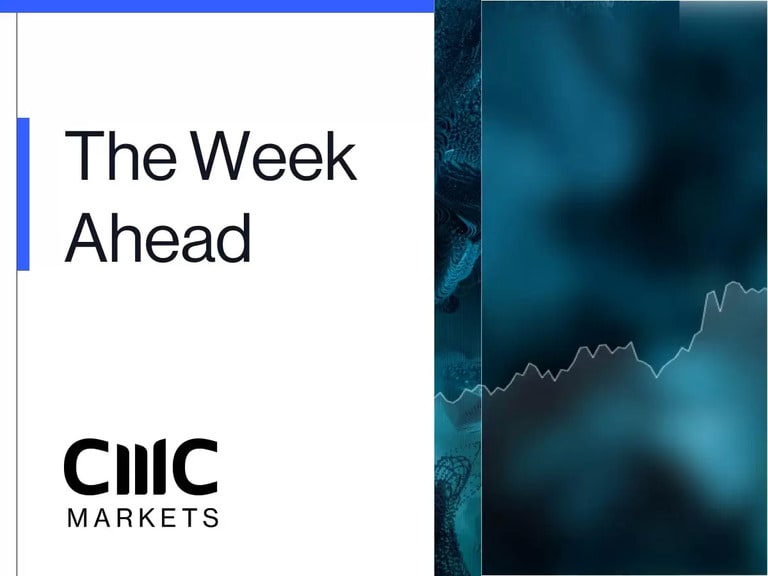The grocery industry has always been considered a bastion of stability, with sales unaffected by changes in economic conditions or technological advancements. Now that we're in a high-inflation environment that's embracing the artificial intelligence revolution, does this sentiment still hold water? Although some grocery stores are seen to be struggling with increasing labour costs and the unpredictability of inventory management, others are seeing unprecedented growth thanks to the wise decision to innovate and adapt to their customer base. In this article, we will dive into the current state of grocery stocks and analyse the key players and trends in this rapidly-changing market ahead of the earnings reports of giant national grocery chains like Walmart and Costco.
Why Do Investors Invest in Grocery Store Stocks?
The best thing about defensive sectors like consumer staples is that they're all-weather investments. Regardless of whether it's a bear or bull market, there is consistent demand for the goods and services that grocery store stocks provide because food is a basic necessity. Although some critics might describe these types of businesses as low margin, top grocery store chains like Walmart, Costco and Target all exhibit low volatility and consistent revenue streams that allow investors to weather any storm. To ensure they don't lose any market share to their competitors, these huge grocery chains refrain from resting on their laurels and actively choose to innovate so they're one step ahead of their competition. From developing proprietary e-commerce platforms to offering home delivery options, these grocery chains showcase their ability to adapt to changes in consumer behaviours and economic conditions.
Ultimately, what keeps defensive investors coming back is the offering of attractive fundamentals like a robust capital structure, consistent dividend yields and a keen focus on innovation. These present a compelling investment opportunity for investors seeking consistent and reliable returns. Keen on uncovering the potential of these investment opportunities? Here are our top picks to keep on your watchlist when it comes to the best grocery store stocks ahead of their earnings season.
What Are the Risks of Investing in Grocery Store Stocks?
While they are the go-to places for basic necessities, this doesn't mean grocery industry stocks are invulnerable to headwinds like inflation and supply chain disruptions. Typically, large grocery chains rely on their pricing leverage to shift the burden of higher costs of goods sold onto consumers. Unfortunately, their thin net profit margins can dissipate rapidly if they are made to take up this burden of higher-costing goods. This was last seen during the pandemic when the inventory glut and supply chain bottleneck weighed heavily on the balance sheets of the grocery industry.
Another risk worth mentioning is the heavy reliance on their existing workforce. From stocking shelves to providing quality customer service, employees are the lifeblood of grocery chains and play a key role in ensuring daily operations go smoothly. If there were to be a sudden strike or an increase in wage pressures, it could lead to huge losses for the grocery store as the already low margins are threatened with extra costs and lowered profit levels.
The Biggest Publicly Traded Grocery Store Stocks in the US
1. Walmart (NYSE: WMT) – Unmatched Scale
Founded in 1962, Walmart is one of the largest grocery chains in the world, with a presence in nearly every country and a market share that continues to grow. The company has achieved immense success through a combination of supply chain management, operational excellence, and the use of technology to optimise sales and customer experience. While traditional grocery chains might be resistant to changing legacy systems, Walmart has wholly embraced technology and partnered with tech leaders like Microsoft and Google to make use of their technology solutions. This helped optimise operational efficiency and customer service.
By developing an extensive network of suppliers and distributors and implementing rigorous quality control standards for all products sold in stores, Walmart can pass on existing cost-savings to its customers and offer competitive prices while still ensuring healthy profit margins of about 3%. Throw in automated warehouses and advanced inventory tracking systems and you have a hyper-efficient grocery chain that's well-equipped to survive any macroeconomic whirlwind. Although the pandemic's supply chain constraint initially caused profit margin scares, Walmart was able to swiftly adapt to the bottleneck issues and turn the company around within a year as WMT stocks are a mere 5% away from all-time highs.
Exciting Growth Levels With Walmart's New Revenue Streams
Instead of solely relying on its big-box retailing business, Walmart is pursuing revenue streams that are expected to accelerate existing growth and revenue levels. One such high-profit margin revenue stream is Walmart's advertising business. To take advantage of the huge inflow of customers that have taken to Walmart's shelves to shop for essentials, Walmart will now show more third-party ads in self-checkout displays, play more advertisements and jingles over the store's radio and offer more free samples at demo stations. By incorporating such advertising into the Walmart shopping experience, brands will be able to reach more than 100M Americans each week.
Another revenue stream worth noting is its membership loyalty programme, Walmart+. Despite launching in September 2020, Walmart+ has seen impressive growth, with membership numbers pegged at more than 20M active members. This makes up about 17% of all regular Walmart customers. To make this loyalty programme even more widespread, Walmart has made membership prices more affordable by slashing the price of Walmart+ for Americans receiving government aid. With CEO Doug McMillon claiming profits to outpace sales numbers over the next five years, grocery stock investors and traders may want to watch for updates regarding these two revenue streams during their upcoming Q2 earnings call.
2. Costco (NASDAQ: COST) – Memberships & Hot Dogs
Costco is the world's second-largest retailer with a reputation for offering consistently low prices, high-quality merchandise and excellent customer service. While Costco's business model does involve razor-thin margins and maintaining an attractive pricing strategy like the rest of its competing grocery stores, it stands out in two ways, namely bulk selling and its renowned membership-based warehouse clubs. The company's stores are designed to be simple, with high ceilings, concrete floors and large open spaces to accommodate bulk products. By charging an annual membership fee, Costco's customers have access to exclusive discounts and deals. The membership model also creates a sense of exclusivity and loyalty among members, who feel compelled to shop at Costco for their everyday needs to get the most out of their membership. Furthermore, Costco's bulk purchasing strategy allows the company to negotiate lower prices from suppliers, making it possible to offer criminally low prices to its customers while still maintaining a profit.
Interestingly, while we normally see grocery stores go all-out when it comes to cost-cutting to maximise pricing efficiency, Costco does things a little differently in the form of its US$1.50 hot dog and soda deal. Although there have been inflationary pressures to raise the price of this crowd-favourite food and beverage combo, CFO Richard Galanti has shrugged off said pressures and reassured customers that Costco plans to keep the combo at its affordable price forever. It's ultimately this commitment to appeasing members alongside its highly profitable business model that has made Costco such a popular grocery store stock option among investors keen on getting invested in the sector.
Fending Off Recessionary Fears With Costco's Earnings
Based on Costco's Q1 2023 earnings report, earnings per share surpassed expectations with the caveat of adjusting expectations because of a discontinuation of Costco's charter shipping activities. This ultimately makes Costco one of the few beacons of hope amid recessionary fears as consumers purchased groceries in bulk despite fears of slowing demand during an economic recession. With its unique model of bulk selling and membership-based revenue, Costco has continually shown resilience in various economic conditions.
This recent earnings report demonstrated strong sales growth and increased membership renewals, both of which are positive indicators of consumer spending power and confidence. In the face of potential economic downturns, these solid financials signal the possibility of avoiding a recession as consumers continue to rely on and spend at big-box retailers like Costco for their essentials. By further clamping down on membership card sharing, all eyes will be on Costco's Q2 2023 earnings report as they tidy up loose ends on potential revenue and consolidate overall earnings.
3. Target (NYSE: TGT) – Beyond Big Box Retail
Target Supermarkets has been able to sustain its popularity amid other top grocery store chains by implementing a strategic approach that appeals to customers. The store has been able to thrive in the competitive grocery industry by offering a wide range of quality products that range from clothing and household goods to electronics and toys. By pricing them competitively and offering additional services like contactless, same-day delivery and a focus on a quality online shopping experience via its e-commerce website, Target manages to effectively offer a one-stop-shop for customers that go beyond the conventional big box retail store visits.
In terms of profitability, Target is also well-poised to weather the storm as it consistently generates strong earnings growth despite being a fraction of the market capitalisation of Walmart and Costco. This can be attributed to the company's aggressive cost-cutting measures that have allowed it to reduce expenses while still maintaining its attractive customer service standards through investments in advanced technologies such as sorting centre automation and artificial intelligence. As a result of this aggressive cost-cutting and effort to maximise efficiency, Target has been able to enjoy a strong and resilient level of profitability that benefits from the current inflationary environment.
Target's Pride Month Controversy & TGT Share Price Decline
The month of June spelt disaster for Target as they received backlash on social media for their LGBTQ+-related merchandise. The ones that drew the most heated responses were 'tuck-friendly' women's swimsuits that catered to trans women to conceal their private parts and Abprallen's clothing accessories, a London-based company that sold LGBTQ+ clothing with satanic and occult themes. While Target eventually bowed to public pressure and stopped selling Abprallen's products, the entire saga caused the company's stock price to drop to about US$125; a price that was previously seen in June 2020.
Although attempting to be inclusive and supporting underserved communities is seen as a sign of progressiveness, companies must understand the risk of alienating certain segments of their customer base when marketing these initiatives. It's ultimately a delicate balance that requires thoughtful consideration to ensure that brands don't become associated with controversial themes. Since this incident, TGT share prices have yet to recover from its Q1 earnings slump. With their Q2 earnings report highlighting an unacceptable amount of retail theft this year, only time will tell if Target is able to reclaim its position as one of the top grocery store stocks in the US market.
The Bottom Line
In conclusion, investing in grocery store stocks like Walmart, Costco and Target ahead of their earnings has its benefits. This includes stability, consistent demand from the masses and attractive dividend yields. However, it is essential to be aware of the risks that come with investing in this industry, such as unexpected macroeconomic headwinds like inflation, unemployment rates and consumer behaviour, supply chain disruptions, wage pressures, and labour disputes as well as paying attention to key factors such as revenue growth potential, management efficiency and the company's willingness to innovate. By fully understanding the industry's potential risks and benefits, a well-informed investor can capitalise on the grocery store industry's stability and reliable returns while minimising the potential downside.
Interested in reading up about the online counterpart of these huge grocery store stocks? Read up on our guide to e-commerce stocks and learn about their potential upside and downside. Keen to begin trading right this instance? Start your trading and investing journey with us today.
Disclaimer: CMC Markets Singapore may provide or make available research analysis or reports prepared or issued by entities within the CMC Markets group of companies, located and regulated under the laws in a foreign jurisdictions, in accordance with regulation 32C of the Financial Advisers Regulations. Where such information is issued or promulgated to a person who is not an accredited investor, expert investor or institutional investor, CMC Markets Singapore accepts legal responsibility for the contents of the analysis or report, to the extent required by law. Recipients of such information who are resident in Singapore may contact CMC Markets Singapore on 1800 559 6000 for any matters arising from or in connection with the information.








